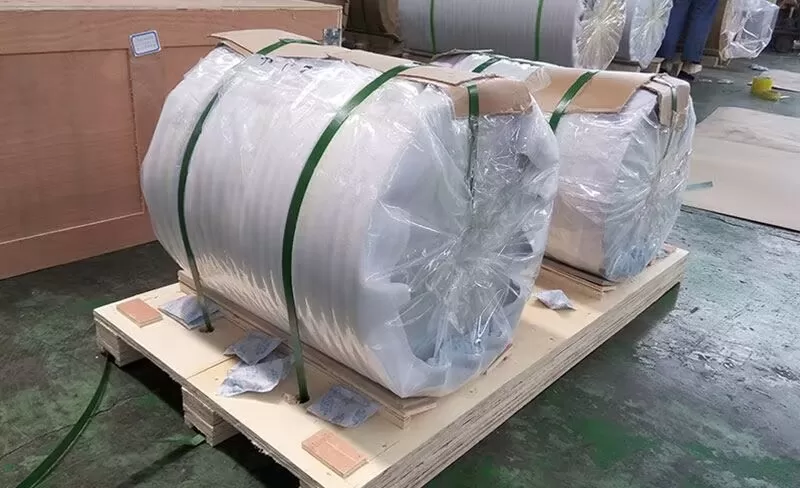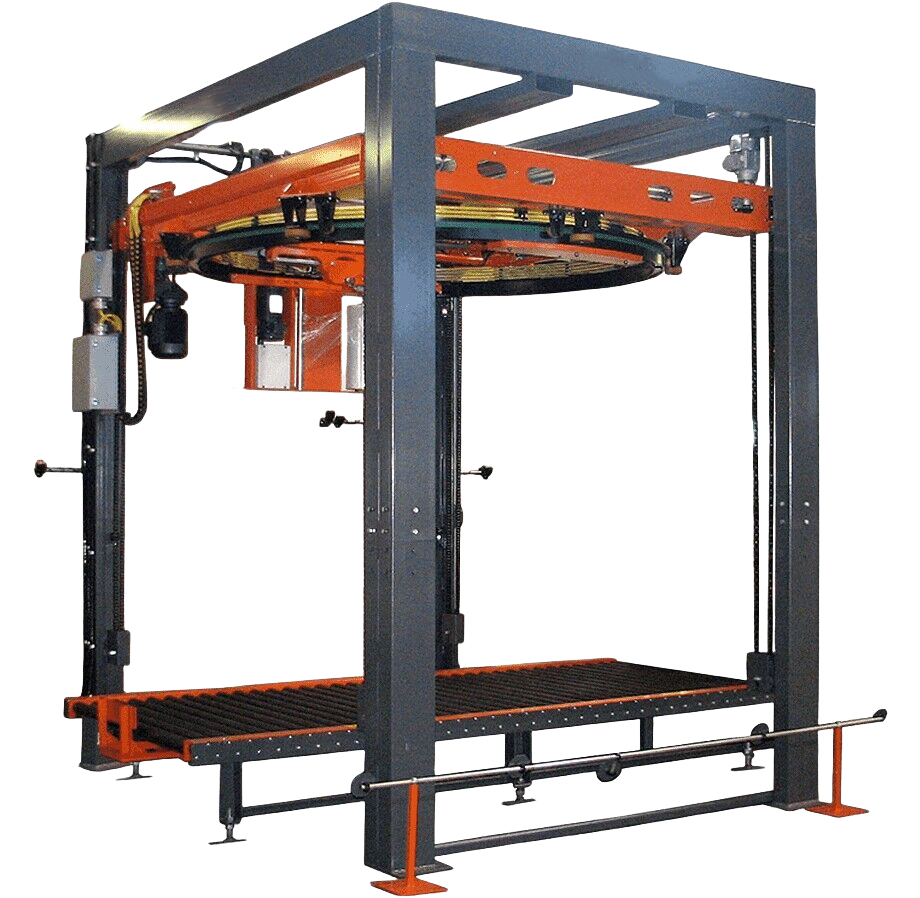Optimizing Steel Coil Packaging with Stretch Wrapping Technology
Stretch wrapping is a critical process in the packaging and transportation of steel coils. Implementing consistent and secure wrapping methods streamlines operations and ensures coil integrity throughout the supply chain. Understanding the available technology helps in making informed decisions for optimal packaging results.
Automated stretch wrapping offers significant advantages for steel coil packaging. When integrated with systems like automated palletizers, coils can be loaded precisely, creating consistent pallet profiles ideal for uniform film application. This precise wrapping maintains tight, reinforced stacks capable of withstanding transportation vibrations. The result is a single, stable unit, enhancing handling and safety compared to loosely stacked coils.
Furthermore, consistent wrapping improves quality perception and traceability. Uniformly packaged coils present a professional image, potentially enhancing brand recognition. Customers benefit from predictable dimensions and reliable protection. Traceability is also simplified when pallets are wrapped identically and incorporate necessary production or tracking data.

1. Challenges of Traditional Manual Wrapping
Manual stretch wrapping of heavy steel coils poses significant ergonomic challenges. The physical demands involved in maneuvering film around bulky, heavy loads can lead to repetitive strain injuries, fatigue, and reduced efficiency, especially over long shifts.
- Physical Strain: Lifting, bending, and maneuvering heavy film rolls around large coils is strenuous.
- Safety Risks: Increased risk of musculoskeletal disorders (MSDs) and accidents compared to automated methods.
- Inconsistency: Manual wrapping can lead to variations in film tension and application, potentially compromising load stability.
- Productivity Impact: Physical fatigue and potential injuries can lower worker morale and overall productivity, leading to unplanned absenteeism and operational disruptions.
These factors contribute to higher operational costs and potential inconsistencies in packaging quality, impacting long-term planning and customer satisfaction.
2. Embracing Automation: The Benefits of Machine Wrapping
Automated and semi-automatic stretch wrapping machines provide a robust solution, enhancing efficiency, consistency, and safety in steel coil packaging operations.
- Enhanced Productivity: Machines operate faster than manual methods, increasing throughput, especially for high-volume orders. Automatic wrapping machines integrate seamlessly with conveyor systems for continuous operation with minimal human intervention.
- Improved Safety: By automating the physically demanding wrapping process, machines significantly reduce ergonomic risks for workers. Operators typically monitor the equipment from a safe distance.
- Consistent Quality: Machines apply stretch film with consistent tension and overlap, ensuring uniform load containment and stability for every pallet.
- Labor Optimization: Automation reduces the manual labor required per pallet, potentially allowing one operator to oversee the process, freeing up personnel for other tasks.
- Integration Potential: Stretch wrappers can be integrated into larger automated packaging lines, streamlining the entire workflow from production to shipping.
This shift towards automation not only boosts operational efficiency but also ensures reliable, high-quality packaging essential for protecting valuable steel coils.
3. Selecting the Right Stretch Wrapper: Turntable Machines
Various types of stretch wrappers cater to different load characteristics. Turntable stretch wrappers are a common and effective solution for many applications, including stable steel coil pallets.
- Operation: The pallet load is placed on a rotating turntable. As the turntable spins, a film delivery system moves vertically, applying the stretch film around the load.
- Suitability: Best suited for stable, relatively uniform loads that can withstand rotation without shifting. Ideal for standard palletized steel coils when integrated with conveyor systems for an automated line.
- Benefits: Generally offer high wrapping speeds and efficiency for stable loads.
When considering steel coil palletizing, a turntable wrapper, often combined with conveyors, provides an efficient method for securing standard coil configurations.

4. Handling Unstable or Heavy Loads: Rotary Arm Wrappers
Rotary arm stretch wrappers offer an alternative approach, particularly beneficial for loads unsuitable for turntables.
- Operation: The pallet load remains stationary on the floor or conveyor. A rotary arm holding the film delivery system revolves around the load to apply the stretch film.
- Suitability: Ideal for very heavy, tall, or unstable loads that might shift or collapse if rotated on a turntable. This makes them a strong candidate for large or exceptionally heavy steel coil pallets.
- Benefits: Provides secure wrapping without requiring load rotation, enhancing stability for challenging configurations.
For heavy-duty steel coil pallets where stability during wrapping is paramount, a rotary arm stretch wrapper ensures secure containment without compromising the load's integrity.
5. Flexibility and Large Loads: Robot Stretch Wrappers
Robot stretch wrappers provide maximum flexibility and portability in the wrapping process.
- Operation: A mobile, self-propelled machine drives around a stationary pallet load, applying stretch film. Requires minimal fixed infrastructure.
- Suitability: Excellent for oversized, extremely heavy, or irregularly shaped loads that are difficult to move to a fixed wrapping station. Suitable for wrapping large steel coils or non-standard pallet configurations directly on the warehouse floor.
- Benefits: Highly flexible, can wrap loads of virtually any size, weight, or dimension. Portable design allows wrapping in different locations within a facility. FHOPE's Robot Master is an example of such adaptable solutions.
For facilities handling diverse or very large steel coil formats, a robot wrapper offers unparalleled adaptability and efficiency.
6. Specialized Wrapping: Horizontal Stretch Wrappers
Horizontal stretch wrappers are designed for products with elongated or non-standard profiles, including individual large coils.
- Operation: The product moves horizontally on a conveyor through a rotating ring dispenser that applies the stretch film around its circumference (eye-through wrapping).
- Suitability: Specifically designed for long items (pipes, lumber, doors) or ring-shaped products like individual steel coils that require wrapping through the center eye.
- Benefits: Provides secure, protective wrapping for items unsuitable for vertical (pallet) wrappers. Ensures full containment around the coil's surfaces.
For packaging individual steel coils before palletizing or for direct shipment, a horizontal eye-through stretch wrapper is the specialized solution required.

7. Understanding Stretch Film Types
The type of stretch film used significantly impacts load security, cost-effectiveness, and wrapping performance. Key types include:
- Cast Film: Produced by extruding molten plastic onto cooled rollers. It's generally clear, glossy, unwinds quietly, and offers good cling. Often used for lighter, uniform loads. Requires careful tension control for heavier loads like steel coils.
- Blown Film: Manufactured by blowing air into molten resin to form a bubble, which is then collapsed. Blown film typically offers higher puncture and tear resistance compared to cast film of the same gauge, making it suitable for heavier or irregular loads. It tends to be hazier and noisier to unwind.
- Pre-Stretch Film: Film that is stretched mechanically (often by the wrapper's pre-stretch carriage) before being applied to the load. This increases film yield (coverage per roll) and provides more consistent containment force with less material, leading to cost savings and improved sustainability. Most modern automated wrappers utilize pre-stretch systems.
For steel coil palletizing, selecting a film with appropriate strength, puncture resistance, and compatibility with the wrapping machine's pre-stretch system is crucial for secure and cost-effective packaging.
8. The Importance of Pre-Stretch Film Delivery
A high-performance pre-stretch carriage is a vital component of modern stretch wrapping machines, especially in high-volume applications like steel coil packaging.
- Function: This mechanism uses powered rollers rotating at different speeds to elongate the stretch film before it reaches the load. Pre-stretch ratios can range significantly (e.g., 150% to over 300%), meaning 1 meter of film can be stretched to cover 2.5 to over 4 meters on the load.
- Benefits:
- Film Savings: Significantly reduces the amount of film consumed per pallet, lowering material costs.
- Improved Load Containment: Stretched film provides stronger, more consistent holding force.
- Sustainability: Reduces plastic waste.
- Efficiency: Optimizes material usage for faster wrapping cycles.
Investing in a stretch wrapper with an efficient and reliable pre-stretch system is essential for optimizing costs and ensuring secure containment for heavy steel coil pallets.
9. Selecting the Correct Film Gauge (Thickness)
Film gauge, or thickness (often measured in microns or mils), directly relates to the film's strength and resistance properties.
- Gauge Basics: Higher gauge numbers indicate thicker, generally stronger film. However, the strongest film isn't always necessary or cost-effective.
- Load Requirements: The required gauge depends on the load's weight, shape, stability, and the rigors of the shipping environment. Heavy, potentially sharp-edged loads like steel coils typically require a higher gauge or high-performance film compared to lighter pallet loads.
- Performance vs. Gauge: Modern film technology often allows lower gauge "performance films" to match the strength of older, thicker films, offering potential cost and material savings.
- Cost Implications: Thicker films generally cost more per roll, but using an inappropriately thin film can lead to load failure and product damage, negating any initial savings.
Determining the optimal film gauge for steel coil wrapping involves balancing containment requirements, machine capabilities (especially pre-stretch), and overall cost. Consulting with packaging specialists like FHOPE can help identify the most effective and economical film specification for your specific steel coil application and machinery.